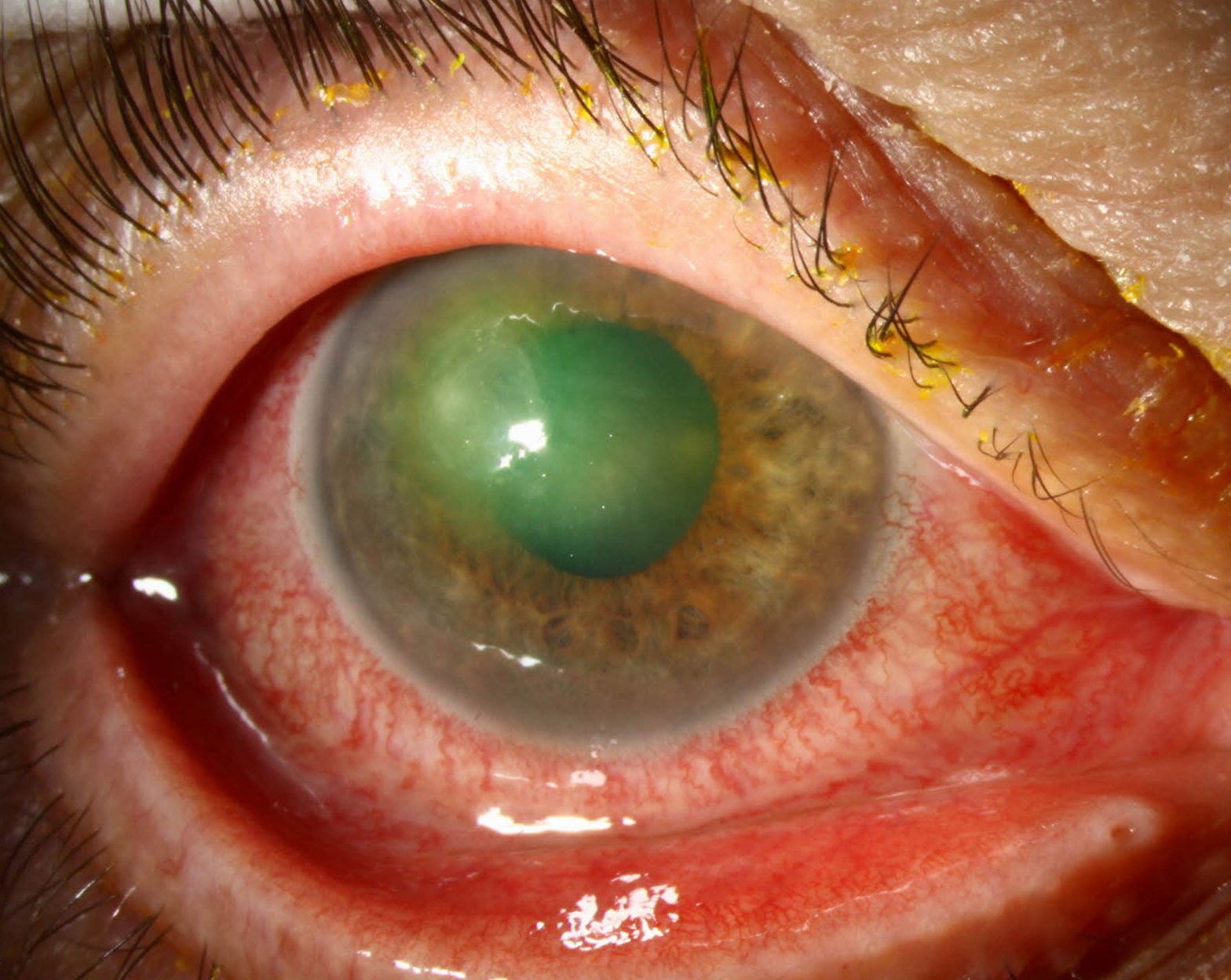 |
| Findings suggest that where a patient with microbial keratitis lives was associated with VA at presentation. Photo: Christine Sindt, OD. Click image to enlarge. |
The severity and response to treatment of a corneal ulcer is highly patient-specific, given the assortment of variables about the infectious organism, nature of the exposure and the individual themselves. Researchers at the University of Michigan Medical School Ann Arbor wanted to expand on this to understand if neighborhood-level social risk factors are also associated with severity of the condition at clinical presentation, as measured by visual acuity, after adjusting for individual-level sociodemographic factors of age, sex, race and ethnicity. The team, whose findings were published in JAMA Ophthalmology, identified several neighborhood-level factors associated with increased odds of presenting with worse vision, such as worse score on a sociological measure called the Area Deprivation Index, increased racial segregation and poor access to transportation. They believed that addressing underlying inequities such as the ones they highlighted and repairing neighborhood infrastructure may improve eye health outcomes.1
The study included 2,990 patients with a diagnosis of microbial keratitis. The team evaluated each participant’s individual-level characteristics (age, sex, race and ethnicity), logMAR BCVA and neighborhood-level factors, including measures on deprivation, inequity, housing burden and transportation at the census block group. Patients had a mean age of 48.6, and 57.6% were female. Patients self-identified with the following race and ethnicity categories: 4.5% Asian, 7.8% Black, 3.5% Hispanic, 96.5% non-Hispanic, 84.4% Caucasian and 3.3% other (included any race not previously listed).
Presenting BCVA had a median value of 0.40 logMAR units (Snellen equivalent: 20/50), and 53.9% of patients presented with BCVA worse than 20/40. Patients presenting with logMAR BCVA less than 20/40 were older than those who presented with 20/40 or higher (mean difference: 14.7 years). After adjusting for age, sex and race and ethnicity, the team found the following measures associated with increased odds ratio (OR) of presenting BCVA worse than 20/40:
- worse Area Deprivation Index (OR: 1.30 per 10-unit increase)
- increased segregation (OR: 1.44 per 0.1-unit increase in a measure of economic inequality called the Theil index)
- higher percentage of households with no car (OR: 1.25 per one percentage point increase)
- lower average number of cars per household (OR: 1.56 per one less car)
“Findings of this cross-sectional study suggest that where a patient with microbial keratitis lives was associated with the severity of vision impairment at presentation after accounting for individual-level factors,” the authors concluded in their paper. “Future research is needed to examine why neighborhood-level measures affect the severity of presenting microbial keratitis and explore potential policy and support changes.”1
While health-promoting aspects in a community are best elucidated using neighborhood-level rather than individual-level data, the authors of a commentary for the study also published in JAMA Ophthalmology noted, “We should be cautious when using neighborhood-level characteristics as a stand-in for individual-level social determinants of health when developing structural and public health solutions to eliminate health disparities.”
The authors commended the study in raising awareness that both individual and community factors matter in vision health.
“Somewhat paradoxically, to provide the best care for individuals, we need to start thinking beyond the individual and start considering how individuals interact with their communities,” they wrote in their commentary. “This is true for all patients, but especially for minoritized populations.”
1. Hicks PM, Niziol LM, Newman-Casey PA, et al. Social risk factor associations with presenting visual acuity in patients with microbial keratitis. JAMA Ophthalmol. June 15, 2023. [Epub ahead of print]. 2. Cai CX, Woreta FA, Crews DC. Taking steps to advance health equity in ophthalmology. JAMA Ophthalmol. June 15, 2023. [Epub ahead of print]. |

